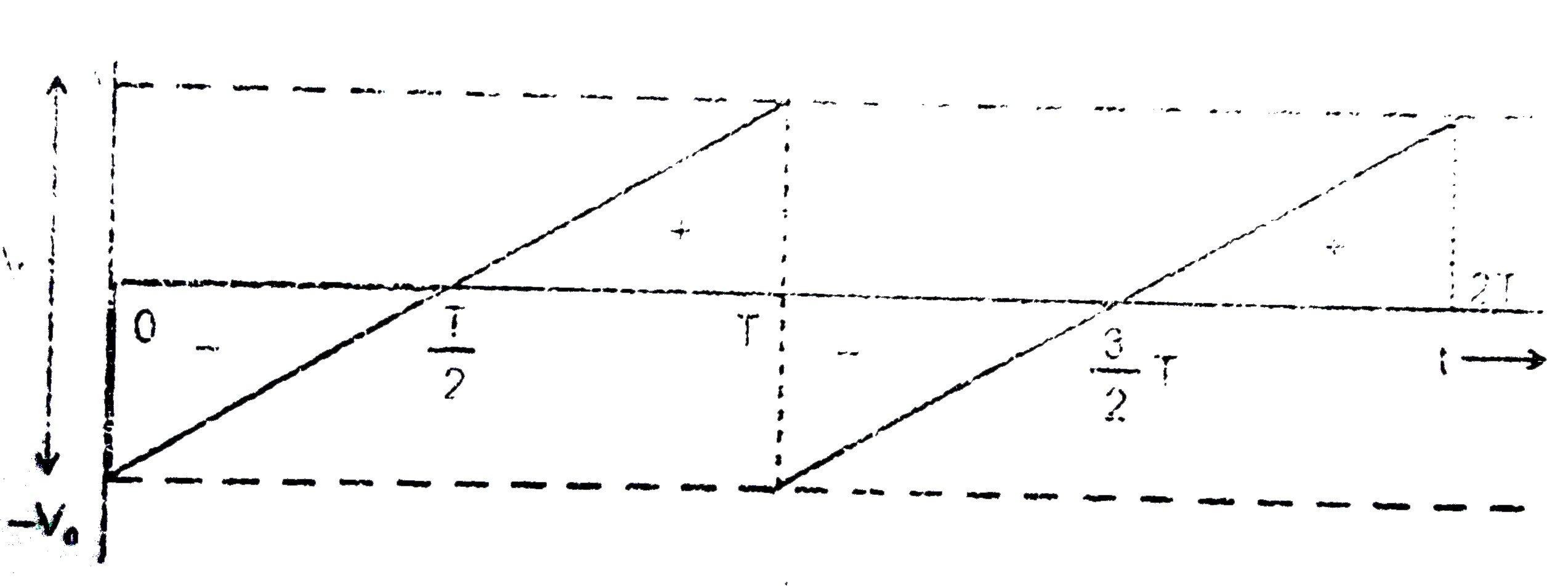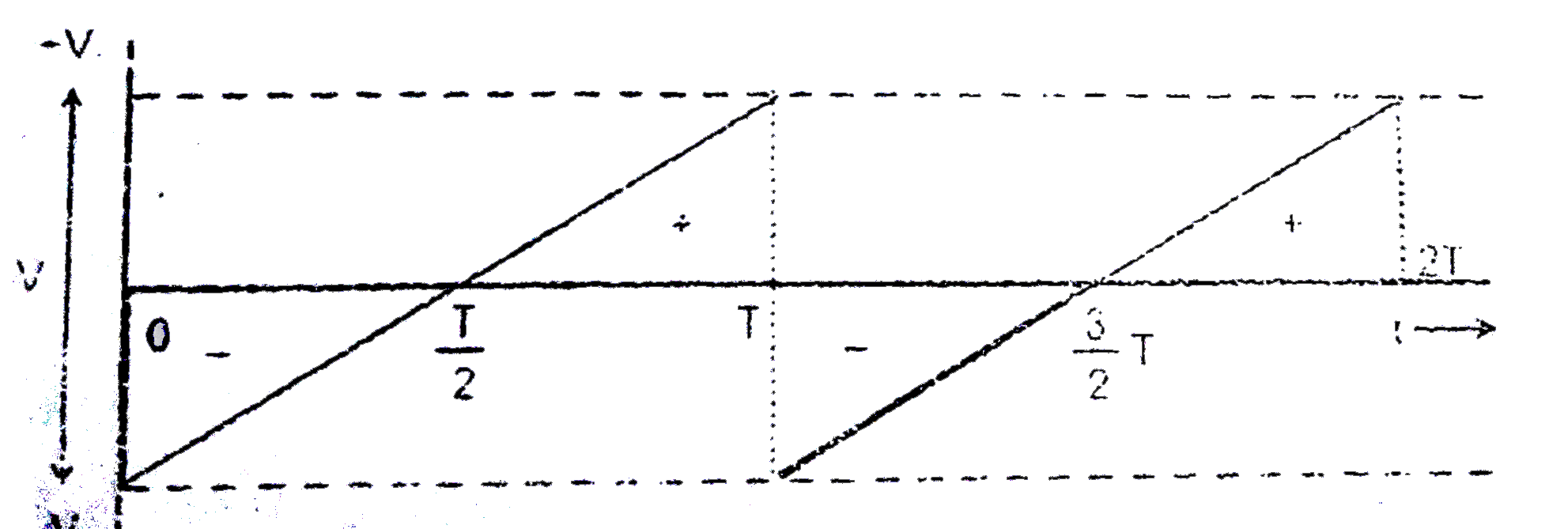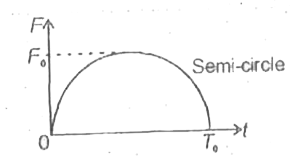The voltage time (V-t) graoh for triangular wave having peak value (V0) is as shown in fig.The rms value of V in time interval from t=0 to T/4 is:

V03
V02
V0√2
V0√3
The correct Answer is:D
Step by step video & image solution for The voltage time (V-t) graoh for triangular wave having peak value (V_0) is as shown in fig.The rms value of V in time interval from t=0 to T/4 is: by Physics experts to help you in doubts & scoring excellent marks in Class 12 exams.
Updated on:21/07/2023Topper's Solved these Questions
Similar Questions
The voltage time (V-t) graoh for triangular wave having peak value (V0) is as shown in fig. The rms value V in time interval t=0 to t=T/4 is

View SolutionThe velocity (v)-time (t) graph of a partide moving along a straight line is as shown in the figure. The displacement of the particle from t = 0 to t = 4 is

View SolutionThe velocity (v) - time (t) graph for a particle moving along x -axis is shown in the figure.The average velocity in the time interval t=0 to t=8s is
1)4.5ms
2) 2.5ms
3) 5ms
4)2ms
View SolutionThe velocity (v)-time (t) graph of a partide moving along a straight line is as shown in the figure. The displacement of the particle from t = 0 to t = 4 is

View SolutionThe rms value of the saw-tooth voltage of peak value V0 from t=0 to t=2T as shown in figure is V0√x.Find the value of x.

View SolutionThe mean value of semi-circular current wave form as shown in figure for time interval t = 0 to t = 2b is

View SolutionFind the aveage for the saw-tooth voltage of peak value V0 from t=0 to t=2T as shown in figure.

View SolutionThe voltage supplied to a circuit is given by V=V0t32, where t is time in second. Find the rms value of voltage for the period, t=0 to t=1s.
View SolutionVelocity time equation of a particle moving in a straight line is v=2t−4 for t≤2s and v=4−2t for t>2.The distance travelled by the particle in the time interval from t=0 to t=4s is (Here t is in second and v in m/s)
View SolutionThe magnitude of force acting on a particle moving along x-axis varies with time (t) as shown in figure. If at t = 0 the velocity of particle is v0, then its velocity at t=T0 will be

View Solution
